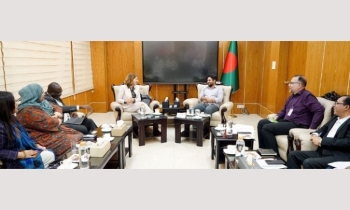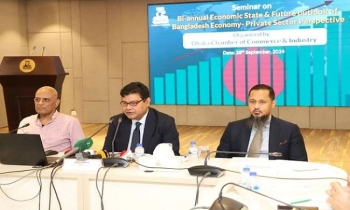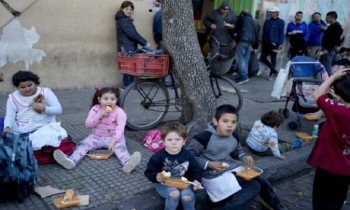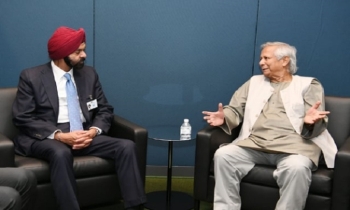Asia-Pacific garment industry suffers from Covid-19 fallout
BI Report || BusinessInsider
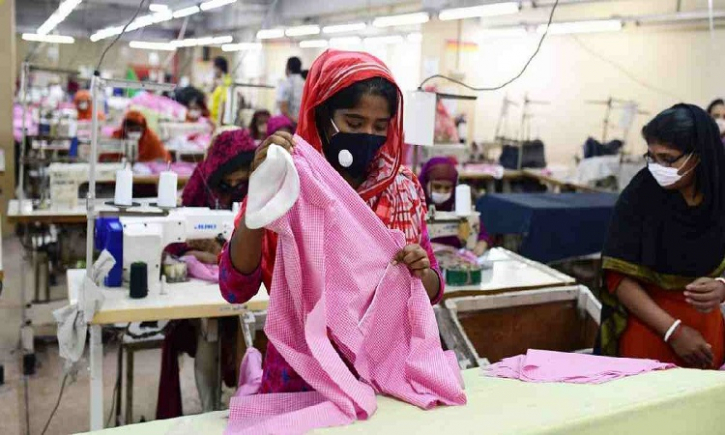
Photo: Collected
Dhaka (Oct 21, 2020): The Covid-19 crisis has hit the garment sector in the Asia-Pacific region hard, with plummeting retail sales in key export markets affecting workers and enterprises throughout supply chains, according to new research from the International Labour Organization (ILO).
The supply chain ripple effect -- How Covid-19 is affecting garment workers and factories in Asia and the Pacific -- assess the impact of the Covid-19 crisis on supply chains, factories and workers in 10 major garment-producing countries of the region: Bangladesh, Cambodia, China, India, Indonesia, Myanmar, Pakistan, the Philippines, Sri Lanka and Vietnam.
Sample data from May 2020 shows that only 3.9 percent of Bangladeshi suppliers have retained their entire workforce and 43 percent of RMG factories in Bangladesh are operating with less than temporarily or indefinitely, reports UNB.
Worker layoffs and dismissals have increased sharply, while factories that have reopened are often operating at reduced workforce.
“Thankfully, many RMG exporters have resumed operations over the past few months. At the same time, these resilient Bangladeshi enterprises and workforces have to wrestle with the ongoing pandemic and ensuring safe conditions for all,” said Tuomo Poutiainen, Country Director, ILO Bangladesh.
The ILO has supported the development of a national Occupational Safety and Health (OSH) guideline on COVID-19 to mitigate infections in workplaces, he said.
Besides, Poutiainen said, several initiatives to protect income, health and employment of RMG workers and support for employers during the pandemic have also been developed.
The research highlights that major buying countries’ imports from garment-exporting countries in Asia dropped by up to 70 percent in the first half of 2020, due to collapsing consumer demand, government lockdown measures, and disruptions to raw material imports necessary for garment production.
As of September 2020, almost half of all jobs in garment supply chains were dependent on demand for garments from consumers living in countries with the most stringent lockdown measures in place, where retail sales have plummeted.
The AsiaPacific region employed an estimated 65 million garment sector workers in 2019, accounting for 75 percent of all garment workers worldwide.
Speaking about the findings, Chihoko Asada Miyakawa, ILO Regional Director for Asia and the Pacific, said: “This research highlights the massive impact Covid-9 has had on the garment industry at every level. It’s vital that governments, workers, employers and other industry stakeholders, work together to navigate these unprecedented conditions and help forge a more human-centred future for the industry.”
Throughout the surveyed countries, governments and industry associations have issued ILO supported guidance for minimizing the spread of Covid-19.
Although governments in the region have responded proactively to the crisis, the research reveals the closure of thousands of factories across the region either capacity.
“The typical garment worker in the region lost out on at least two to four weeks of work and saw only three in five of her co-workers called back to the factory when it reopened. Declines in earnings and delays in wage payments were also common among garment workers still employed in the second quarter of 2020,” said Christian Viegelahn, Labour Economist at the ILO Regional Office for Asia and the Pacific.
Besides, the research identifies how women, who make up the majority of the workers, have been disproportionately affected by Covid-19, exacerbating existing inequalities in earnings, workload, occupational segregation, and distribution of unpaid care work.
The recent global ‘Call to Action,’ an international multi-stakeholder initiative facilitated by ILO is also noted as a promising example of industry-wide, solidarity efforts to address the crisis.
The supply chain ripple effect: How Covid-19 is affecting garment workers and factories in Asia and the Pacific is based on extensive desk research and analysis of publicly available and enterprise-level data, together with interviews with leading stakeholders from across the sector in Asia.
It was led by Cornell University and an ILO team comprising the Regional Economic and Social Analysis Unit (RESA), Better Work and the ILO-Sida Decent Work in Garment Supply Chains Asia project.
Key Bangladesh RMG Data
According to data from UNCTAD, the total value of Bangladesh’s garment exports was US$33.6 billion in 2019.
RMG sector accounts for 90 percent share of exports and manufacturing value-added. Nearly one in nine women in employment are employed in the garment sector in Bangladesh.
Some 43 percent of suppliers in Bangladesh are operating with less than 50 percent of their pre-pandemic workforce.
About 230,749 workers among ILO Better Work Bangladesh’s (BWB) member factories were still not working as factories re-opened, representing 41 percent of total workers under the BWB programme.
ILO BWB data indicates that one in five workers received their wages later than the legally-mandated seven working days.
By June 2020, the total year-to-date imports from Bangladesh fell by as much as 29 percent, when compared to the same period in 2019.
Comprehensive data on the resulting decline in apparel orders by country is not available, but a Better Buying survey of 179 suppliers from 30 countries, including Bangladesh, conducted in May 2020 found that 64 percent of apparel factories received cancellations from customers.
A survey in May 2020 among 250 BWB factories 38 percent of factory respondents faced order reductions or were asked to hold shipments, 34 percent experienced order cancellations, and 4 percent could not produce garments due to a lack of raw material.
A Penn State Center for Global Workers.’ Rights survey of suppliers in Bangladesh in late March 2020 found that in factories with cancelled orders, 72 percent of buyers had not paid for raw materials and 91 percent had not paid for the production cost of already-produced goods (Anner, 2020).
Bangladesh Garment Manufacturers and Exporters Association (BGMEA): From March to April 2020, 348 factories closed down (BGMEA representatives, interview, July 22, 2020).
Surveys conducted by Better Work Bangladesh (March-May 2020) show 60 percent of suppliers closed for over 3 weeks with the largest proportion of suppliers (approximately 40 per cent) closing for 26-35 working days.
Bangladesh has seen a return in orders, particularly from buyers asking suppliers to execute pre-pandemic work orders. However, differences in the distribution of resumed orders being received among factories - with larger firms recovering more orders than smaller and medium-sized firms (RMG Bangladesh, 2020a).
Moreover, wages decreased, as revealed in phone surveys of 1,377 apparel workers in Bangladesh conducted by Microfinance Opportunities (MFO) and the South Asia Network on Economic Modeling (SANEM). The survey found that workers reported a lower median salary of Tk 5,522 (US$65) in May versus Tk 9,500 (US$113 USD) in April (Garment Worker Diaries, 2020).
Lower wages affect workers significantly, particularly with food security.
The MFO SANEM survey found that 77 per cent of respondents in June 2020 reported they ate less food than they should have because they did not have enough money for food.



